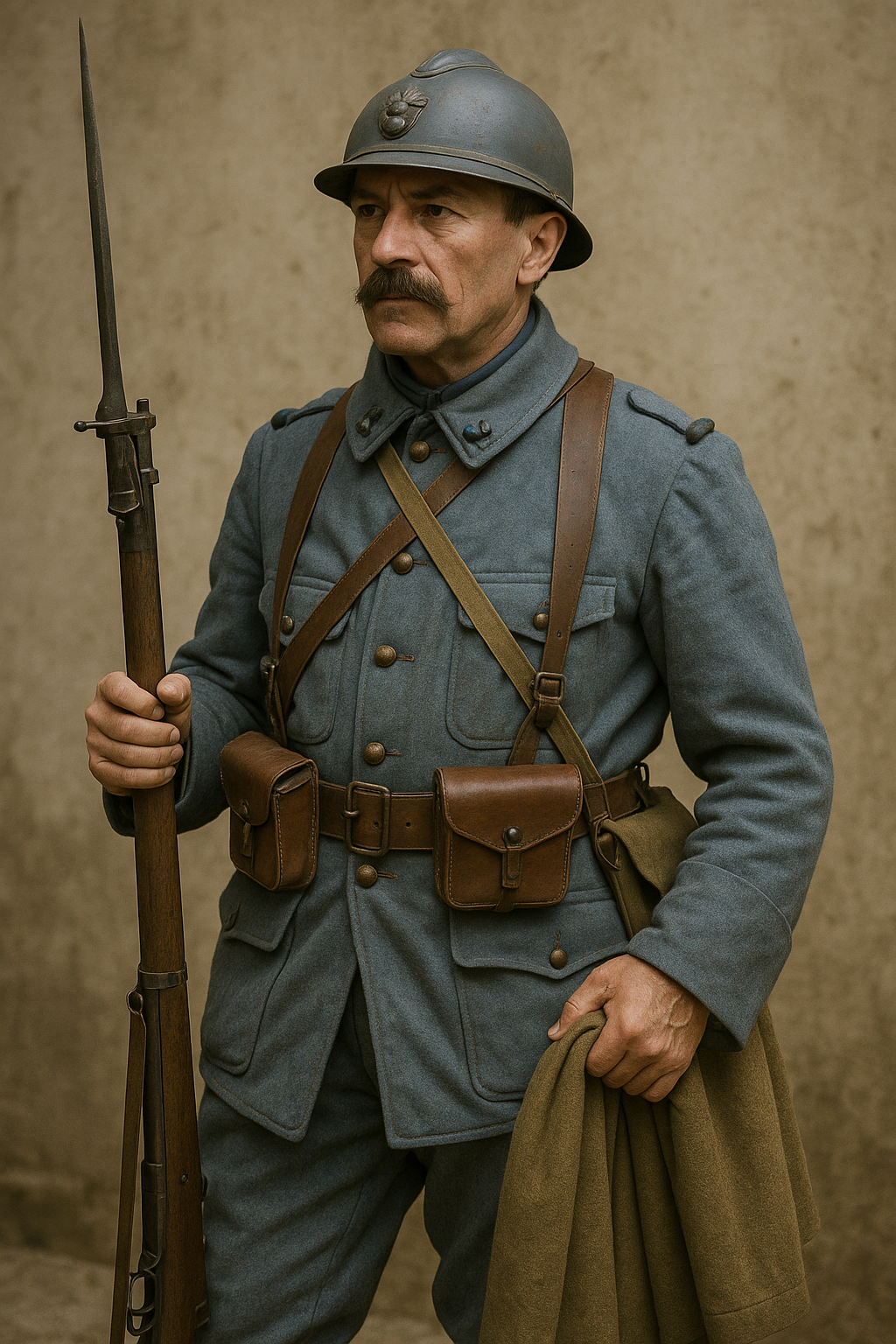
Authentic French World War 1 Uniforms: A Detailed Look into History
Published on Jun 25, 2025
A Journey Through Time: The French World War 1 Uniform
The First World War, often called "The Great War," reshaped nations, armies, and the very nature of warfare. One of the most visible changes occurred in military uniforms. For France, a country deeply rooted in tradition, the shift from bright, eye-catching garments to more subdued, practical clothing was symbolic and strategic.
1. The Early War Uniform: Flashy and Historic
At the onset of WWI in 1914, French soldiers marched into battle wearing uniforms heavily influenced by the past:
- Red trousers and dark blue coats (a design dating back to the Franco-Prussian War).
- Known as the “Tenue de campagne” (field uniform), this outfit was visually stunning but dangerously outdated.
- The French command believed in the psychological power of traditional colors, with red symbolizing valor.
However, this made soldiers easy targets in modern warfare, where camouflage and cover were becoming essential for survival.
2. Enter the Poilu: Horizon Blue Takes Over
As the war escalated and the realities of trench warfare became apparent, France realized it had to modernize its military attire. Thus, the Horizon Blue uniform was born.
- Color: A gray-blue tone that blended well with the European battlefields.
- Jacket: The M1915 tunic, single-breasted with four pockets, made from wool.
- Trousers: Also wool, loose-fitting for better mobility.
- Headgear: In 1915, the traditional kepi was replaced by the Adrian helmet, which offered actual protection from shrapnel and debris.
The term "Poilu," meaning "hairy one," was affectionately used to refer to French infantrymen. It emphasized their rugged, unshaven appearance—a contrast to the polished image of soldiers in earlier conflicts.
3. Functional Design: More Than Just Aesthetic
Unlike earlier ceremonial uniforms, the French WWI gear focused on:
- Utility over formality: Large pockets, reinforced seams, and durable fabric.
- Layering: Soldiers often wore multiple layers to combat cold and wet conditions.
- Footwear: Heavy hobnailed boots provided grip in muddy trenches.
- Accessories: Leather belts, cartridge pouches, canteens, and gas mask bags were standard.
France also introduced the cape or greatcoat, which was vital during long nights in the trenches. It was used for warmth and sometimes as a blanket.
4. Material Matters: What Were They Made Of?
Most WWI French uniforms were made from wool, which was ideal for insulation and relatively resistant to wear and tear.
However, supply shortages forced the army to use:
- Recycled fibers (shoddy wool)
- Cheaper dyes sometimes cause color inconsistency in Horizon blue uniforms
- Cotton undergarments for comfort
These compromises highlight the logistical challenges of outfitting millions of soldiers during total war.
5. Rank & Regiment: Uniform Variations
Though the base uniform remained consistent, there were subtle differences by rank and regiment:
- Officers often had better-quality materials and tailored garments.
- Specialty troops like chasseurs alpins (mountain troops) wore distinct dark blue or black uniforms with unique insignias.
- Colonial troops had further adaptations suited for warmer climates.
Rank was shown using chevrons, collar insignias, and sometimes subtle fabric enhancements.
6. Legacy of the French WWI Uniform
The horizon blue uniform became a national symbol of resistance and sacrifice. After the war:
- It remained in ceremonial use for years.
- It inspired fashion trends and museum exhibits.
- It became a focal point for collectors and WWI reenactors worldwide.
Modern productions, like the ones offered on Paddelaters.com, strive to replicate these uniforms authentically, ensuring that the bravery and style of the French Poilu live on.
7. Why Collectors and Reenactors Love the French WWI Uniform
The French WWI uniform stands out for its:
- Unique color palette uncommon in other military gear of the time
- Historical relevance in major battles like Verdun and the Somme
- Complex yet accessible design for historical reenactments
Whether you’re a seasoned reenactor, a military history enthusiast, or a museum curator, these uniforms offer an unmatched connection to the past.
8. Where to Find Authentic French WWI Uniforms Today
At Paddelaters.com, you’ll find:
- Faithful reproductions of M1915 tunics and trousers
- French Adrian helmets with detailed craftsmanship
- Accessories like belts, ammunition pouches, and greatcoats
- All are crafted with historical accuracy in mind
Our mission is to keep history alive with uniforms that honor the past while meeting the needs of today’s collectors and reenactors.
Conclusion: More Than Just Fabric and Thread
The French World War 1 uniform is a testament to adaptability, resilience, and national identity. From the vivid reds of early 1914 to the practical horizon blue that defined the Poilu, each stitch tells a story of courage in the face of chaos.
